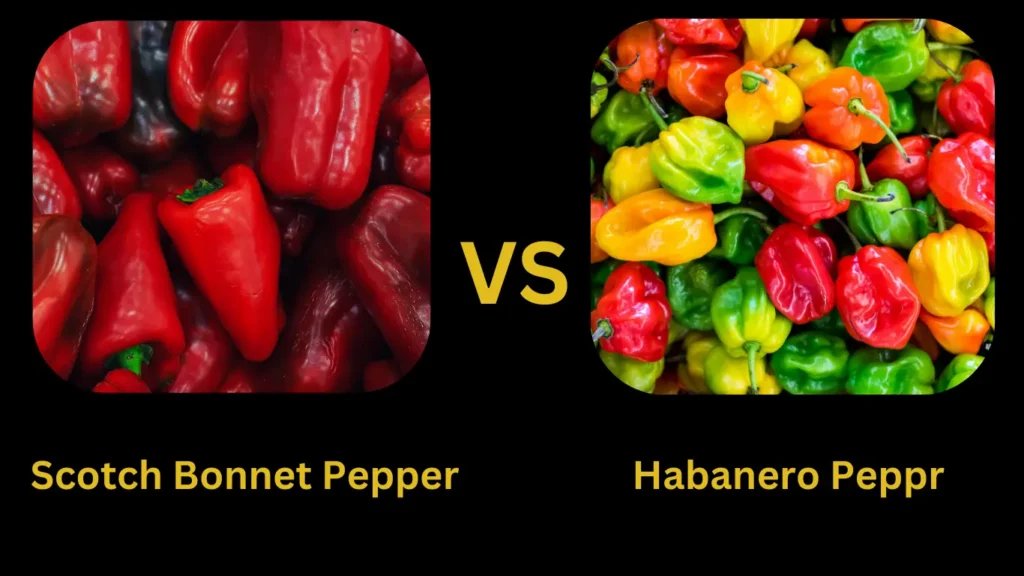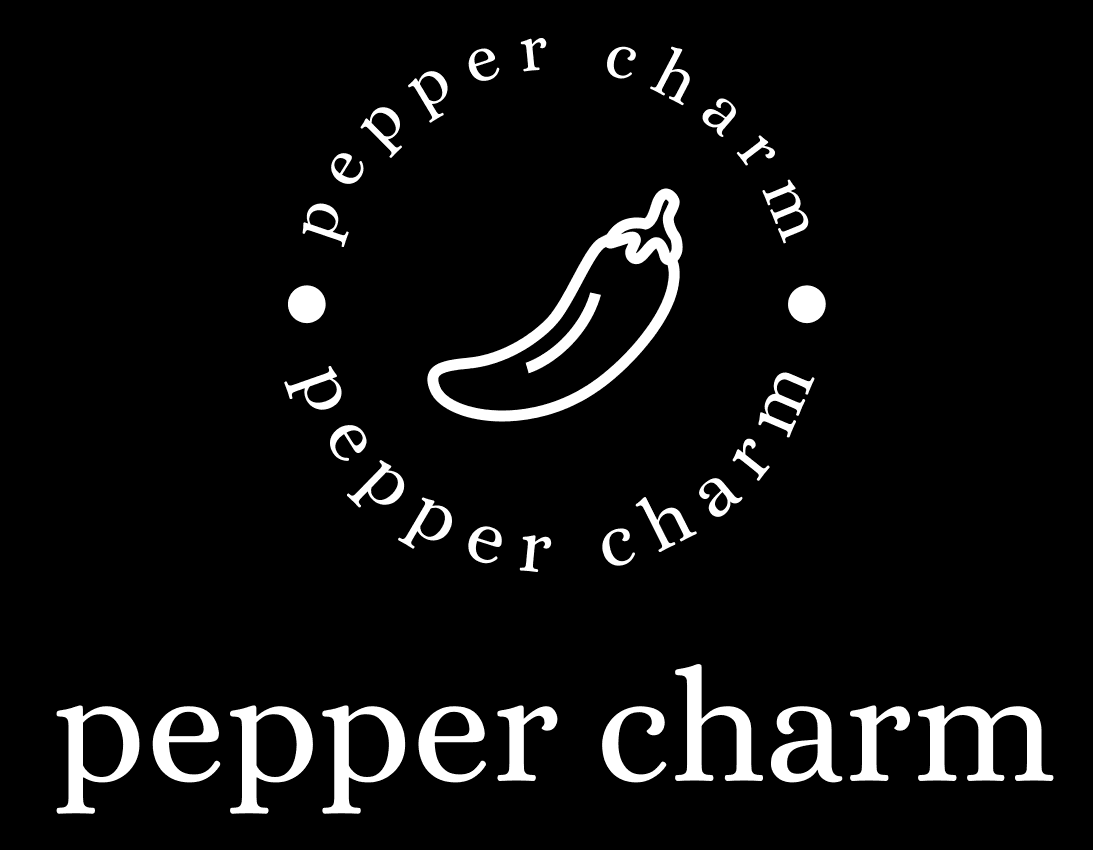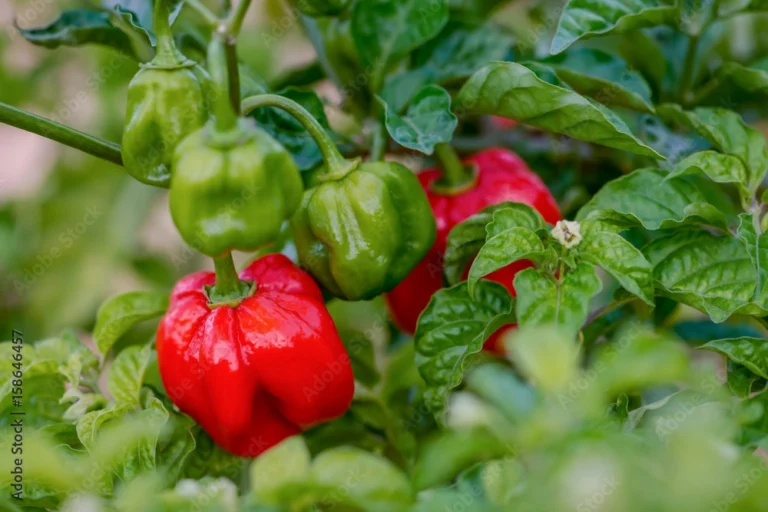Scotch Bonnet Pepper vs Habanero Pepper
Scotch Bonnet vs Habanero: A Spicy Showdown
When comparing the Scotch bonnet pepper vs habanero pepper, both stand out for their intense heat and distinctive flavors. The Scotch bonnet, a staple in Caribbean cuisine, is known for its sweet, tropical undertones and vibrant heat. On the other hand, the habanero pepper, popular in Mexican and South American dishes, boasts a citrusy and slightly smoky flavor profile. Despite their similar Scoville Heat Unit (SHU) range, these two peppers offer unique culinary experiences, making the Scotch bonnet pepper vs. habanero pepper debate a hot topic among spice enthusiasts and chefs.

Scotch Bonnet Pepper vs Habanero Pepper: History and Origin
Scotch Bonnet Pepper
The Scotch Cap pepper hails from the Caribbean, where it’s a basic fixing in numerous conventional dishes. Its title comes from its likeness to a Tam o’ Shanter cap, a traditional Scottish cap. This pepper has been a staple in Caribbean cooking for centuries, utilized in everything from snap flavoring to hot sauces.
Habanero Pepper
The Habanero pepper has its roots within the Amazon Bowl but is most closely related to the Yucatán Promontory in Mexico. Its title, “From Havana,” focuses on its profound social ties to Latin America. Over the long time, the Habanero has become a basic component of Mexican and Central American food, known for its powerful warm, and fruity flavor.
Scotch Bonnet Pepper vs Habanero Pepper: Physical Appearance
Scotch Bonnet Pepper
Scotch Bonnet peppers are effortlessly recognizable by their squat, circular shape and wrinkled skin. They regularly degree between 1 to 2.5 inches in distance across and can run in color from green to dynamic shades of ruddy, orange, or yellow as they develop.

Habanero Pepper
Habanero peppers are marginally longer and more decreased than Scotch Caps, frequently around 1 to 2.5 inches in length. They begin off green and mature to shining colors like orange, ruddy, yellow, or indeed brown. The smooth, reflexive skin of Habaneros recognizes them from the wrinkled surface of Scotch Bonnet Pepper.

Scotch Bonnet Pepper vs Habanero Pepper: Heat Level and Scoville Scale
Understanding the warm level of peppers is basic, and this can be where the Scoville scale comes into play. This scale measures the concentration of capsaicinoids, the compounds capable of a pepper’s spiciness.
| Pepper | Heat Level | Scoville Scale(SHU) |
|---|---|---|
| Scotch Bonnet Pepper | This places them among the more sultry assortments of chili peppers, making them a noteworthy fixing in dishes that require seriously hot. | 100,000 to 350,000 Scoville Heat Units |
| Habanero Pepper | Habaner peppers drop inside a comparable Scoville run, regularly between 100,000 to 350,000 SHU. A few assortments can indeed surpass this run, edging towards 500,000 SHU. This makes them somewhat more sultry than Scotch Caps on normal, even though person peppers can change broadly in hot. | 100,000 to 500,000 Scoville Heat Units |
Scotch Bonnet Pepper vs Habanero Pepper: Flavor Profile
Scotch Bonnet Flavor
Scotch Bonnet peppers are celebrated for their special, fruity flavor. They have a sweet, tropical taste with insights of apple and cherry, making them a delightful expansion to Caribbean cooking. This fruity undercurrent equalizations their warm, including the complexity of dishes.
Habanero Flavor
Habanero peppers moreover offer a fruity flavor profile but with a more honed, more citrus-like edge. They are known for their flower smell and an unmistakable sweetness that can improve various dishes. Their flavor sets well with tropical natural products and is frequently utilized in salsas and hot sauces.
Scotch bonnet pepper vs Habanero pepper: Culinary Uses
Scotch Bonnet Pepper in cooking
Scotch bonnet peppers are a staple ingredient in Caribbean cooking, where they are used to add heat and flavor to a variety of dishes. They are commonly used in jerk marinades, hot sauces, curries, and stews. Scotch bonnet peppers can also be chopped finely and added to salsa, relishes, and chutneys for a spicy kick.

Habanero in Cooking
Habanero peppers are widely used in Mexican and Tex-Mex cuisines, where they add heat and flavor to dishes such as salsas, chili con carne, and tacos. They can be used fresh, dried, or roasted to enhance their flavor and heat. Habanero peppers are also popular for making hot sauces, particularly in the Caribbean and Latin America, where they are combined with other ingredients such as fruit, vinegar, and spices to create fiery condiments.

Dietary Esteem
Scotch Bonnet Supplements
Scotch bonnet peppers are rich in vitamins A and C, giving a critical boost to the resistant framework and skin wellbeing. They moreover contain capsaicin, known for its metabolism-boosting and pain-relieving properties.
Habanero Supplements
Habanero peppers are additionally nutritious, advertising high levels of vitamins A and C. They are too stuffed with cancer prevention agents and have anti-inflammatory properties. The capsaicin in Habaneros can help improve cardiovascular well-being and help in weight administration.
Scotch bonnet pepper vs Habanero pepper Health Benefits
Hot peppers, including Scotch Bonnet vs Habanero, offer various well-being benefits. They can boost the digestion system, diminish irritation, and make strides in heart wellbeing. Capsaicin, the compound that creates these peppers hot, is known for its pain-relieving properties and capacity to battle cancer cells.
Scotch Cap Benefits
Scotch Caps can offer assistance with absorption and have antibacterial properties that bolster intestine wellbeing. They moreover contribute to progressed circulation and can offer assistance lighten sinus blockage.
Habanero Pepper benefits
Habanero peppers are known for their capacity to lower blood weight and cholesterol levels. They can moreover alleviate cerebral pains and are compelling in treating joint pain torment due to their anti-inflammatory impacts.
Development Scotch bonnet pepper vs Habanero pepper
Scotch Cap Developing Conditions
Scotch Cap peppers flourish in warm, tropical climates. They require well-drained soil, bounty of daylight, and steady watering. These peppers are ordinarily developed within the Caribbean but can be developed in comparable climates around the world.
Habanero Developing Conditions
Habanero peppers too lean toward warm climates and are commonly developed in Mexico and Central America. They need well-drained soil, full sun presentation, and standard watering. Habaneros can be developed in nurseries or indoors in cooler climates.
Accessibility and Ubiquity
Scotch bonnet Accessibility
Scotch Cap peppers are broadly accessible within the Caribbean and in claim-to-fame stores around the world. They are a prevalent choice for those looking for true Caribbean flavors.
Habanero Accessibility
Habanero peppers are more broadly accessible all inclusive due to their notoriety in different cuisines. They can be found in most general stores and are regularly sold new, dried, or in sauce frames.
Scotch Bonnet Pepper vs Habanero Pepper: Social Importance
Scotch Cap in Culture
In Caribbean culture, Scotch Cap peppers are more than fair and fixing; they are an image of culinary convention. They are celebrated in celebrations and are a key component in numerous conventional dishes.
Habanero in Culture
Habanero peppers hold a uncommon put in Mexican and Central American societies. They are included in territorial celebrations and are necessary to many traditional formulas, reflecting the wealthy culinary legacy of these locales.
Cultivation Of Scotch bonnet Pepper vs Habanero Pepper
How to grow Scotch bonnet Pepper and Habanero Pepper.
Growing Scotch Bonnet Pepper
Scotch Bonnet peppers thrive in warm, tropical climates. They require plenty of sunlight, well-drained soil, and consistent moisture to grow well. These peppers are typically grown in the Caribbean, but they can also be cultivated in similar climates around the world. Growing Scotch Bonnets at home can be a rewarding challenge for pepper enthusiasts.


Growing Habanero Pepper
Habanero peppers prefer hot and humid conditions, similar to their native South American and Mexican environments. They need full sun, warm temperatures, and well-drained soil to flourish. Habaneros can be grown in many parts of the world, including the southern United States, where the climate is suitable. They are relatively easy to grow for those with the right conditions.
Comparative Investigation between Scotch bonnet Vs Habanero
Heat Comparison
Both Scotch Cap and Habanero peppers are known for their seriously warm, with comparable ranges on the Scoville scale. In any case, Habanero peppers can now and then be marginally more smoking than Scotch Caps, depending on the assortment and developing conditions.
Flavor Comparison
Whereas both peppers have a fruity flavor, Scotch Caps are known for their sweet, tropical taste, while Habaneros have a more honed, more citrus-like flavor. This contrast can impact which pepper is favored in certain dishes.
Culinary Application Comparison
Scotch Cap peppers are a staple in Caribbean food, particularly in twitch flavoring and hot sauces. Habanero peppers, on the other hand, are broadly utilized in Mexican and Central American dishes, including salsas and marinades. Both peppers can be utilized and traded in a few formulas, but their unmistakable flavors may influence the ultimate dish.
Common Misguided judgments
Confusion about Scotch Bonnet
One common misguided judgment is that Scotch Cap peppers are continuously more sultry than Habaneros. Whereas they are undoubtedly hot, their warm level can shift, and a few Habanero assortments can be more sultry.
Confusion about Habanero
Numerous individuals accept that Habanero peppers are hot and need flavor. In reality, Habaneros have a complex, fruity flavor that includes profundity to dishes, adjusting their heat.
Choosing the Proper Pepper
Scotch Bonnet Pepper vs Habanero Pepper: Tips for selecting
When choosing between Scotch Cap and Habanero peppers, consider your warm resistance, flavor inclination, and the dish you’re planning. If you prefer a sweeter, more tropical flavor, take Scotch Caps. If you need a sharper, citrusy warm, Habaneros could be the way better choice.
Components to Consider
Warm Resistance: Both peppers are hot, but a person’s resilience levels can change. Begin with smaller sums and alter to taste.
Flavor Inclination: Think about the general flavor profile you need to attain in your dish.
Dish Sort: Consider the cooking you’re cooking. Scotch Caps are perfect for Caribbean dishes, whereas Habaneros suit Mexican and Central American formulas.





